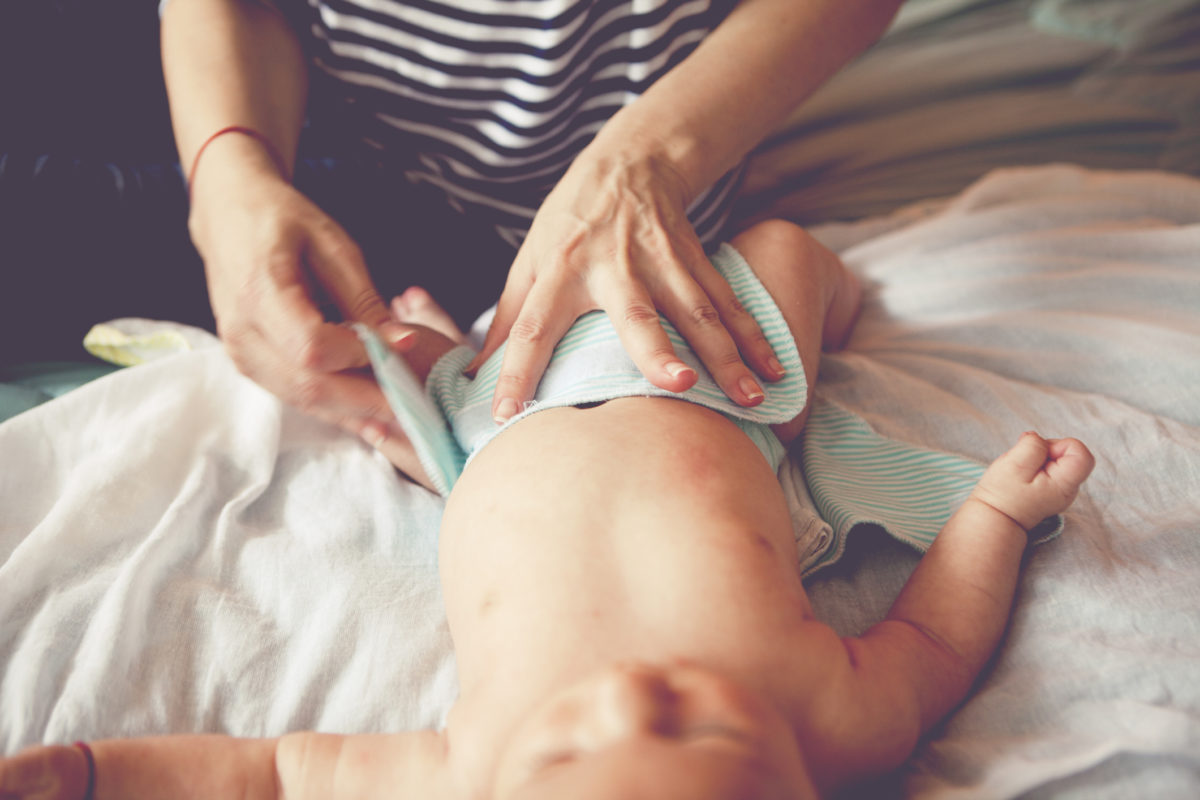
After the greatest workout of your life, you bring home a beautiful newborn baby. The feelings of elation are overwhelming as you gaze into those big blues.
In only a short while, the reality of responsibility also sets in; all with the elation still in tact.
Most of the time we have all the details figured out in our busy mommy brains ahead of time so we know whether we are breast or bottle feeding, co-sleeping or crib sleeping, and using cloth or disposable diapers.
Every well thought-out choice doesn’t always play out in reality the way it was expected too. And with the information super highway we call the Internet available, sometimes new information comes to light that makes us want to change our “good on paper” plan.
Looking at the pros and cons of disposable versus cloth diapers will, hopefully, make one decision more secure.
Disposable diapers have their obvious advantages because they’re convenient and can be easily discarded. They also provide a savings on your water and electricity bill as you don’t have to wash them.
Disposable diapers do create more waste, but most disposables are around 40% biodegradable. The type of disposables used, however, could make the decision an easy one.
Most conventional disposable diapers have toxic chemicals that could harm your baby.
Awesomebeginnings4children reported:
“Dioxins and sodium polyacrylate, two of the chemicals found in disposable diapers, have either been linked to or have caused the following toxic responses: cancer, reproductive & infertility problems, asthma & respiratory distress, hormonal problems, developmental & cognitive problems, suppressed immune system, diabetes, endometriosis, allergic reactions, chemical burns, Chloracne.”
There are brands that make disposable diapers free of these harmful chemicals, but to provide you with this quality product, you’re going to have to pay for it.
Brands like Seventh Generation and Honest Company are good choices when keeping your baby chemical-free. They are gel-free, which is where most of the danger lurks in traditional disposables.
The Bump reported:
“Disposable diapers are more breathable, but their moisturizing, absorbent chemicals irritate some babies. Some babies might prefer the softer feel of cloth diapers.”
Cloth diapers eliminate the toxic factor right off the bat, which is a pro. They do however utilize water and electricity to keep them clean.
They have the possible environmental impact with an increase in resources, like water and detergent, and more driving if you are using a diapering laundry service.
The Monarch Mommy did a detailed cost-analysis of utilities and detergents when using cloth diapers and found:
“The REAL cost of two years of cloth diaper laundry is $116.20.the monarch mommy”.
The Bump reported:
“A typical family can spend between $2000 and $3000 per baby for two years on disposable diapers while cloth diapers and accessories run about $800 to $1000 if you wash them yourself. If you go with a cloth diaper laundering service it will run you closer to the cost of disposables around $2500 to $2800. But also keep in mind that you can reuse cloth diapers on any new siblings that come along.”
These are inspiring results considering disposables cost hundreds more in a single year. It is notable to mention that cloth diapers require more changing because of their less absorbent pads.
It used to be that cloth diapers were like folding an origami crane to put on baby, but times have changed and it is no longer the case. Cloth diapers come with easy inserts, or with inserts already attached, cute designs, and functional Velcro or snaps.
So, the data has been discussed and now choosing what works better for mommy and baby is on the block.
The healthiest options are chemical-free disposables and cloth diapers; or a convenient mix of the two.
